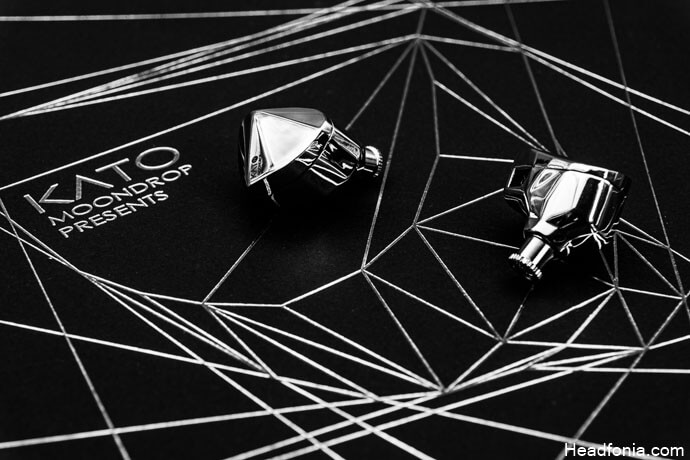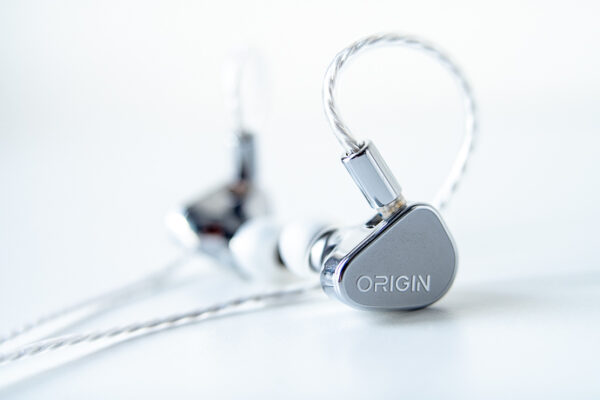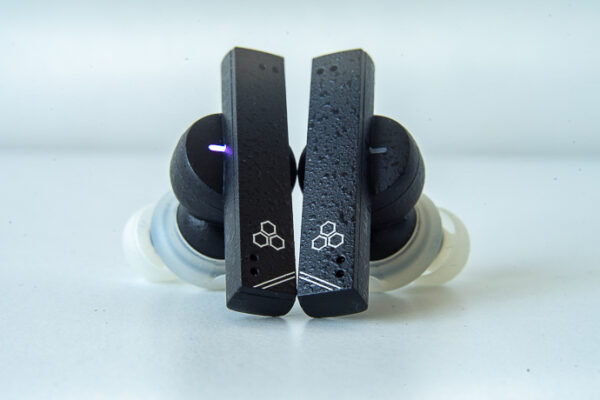Sound Quality
The Kato is an interesting monitor with a special dynamic driver inside.
From the very first listen, you notice that it has a unique, slightly warm, and impressively airy presentation. It has a wide and deep soundstage and it offers a precise sense of instrument layout. I must say that its technical prowess surprised me a lot. Especially compared to IEMs in the sub 200 USD price bracket.
Tonality-wise it is not as flat and neutral as Etymotic’s EVO but it does not feel particularly colored either. It offers a slightly warm timbre with a good body. One of the major points that I liked about the tuning of the Kato is its ability to stay relaxed no matter the genre. Of course, all of these positive points allow it to be a brilliant all-rounder. It does not nit-pick recordings or sources and plays well with the sources in my inventory. Let’s try to take a closer look at the Kato, sound-wise.
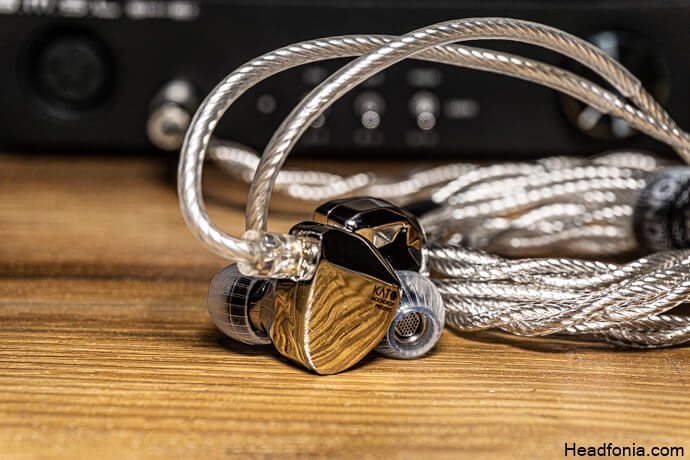
Low
Moondrop Kato has a dynamic low-end reproduction. The bass is punchy, rounded, and very controlled. I found the amount of bass quite balanced. This earphone is by no means a basshead’s delight, rather, it offers a bass that feels precise, accurate, and organic. On another note, to my ears, the sub-bass range feels slightly fuller than the mid-bass range. The sub-bass is perfectly present with good rumble whereas the mid-bass seldomly feels light, especially when you are listening to woodwinds. Apart from that, the Kato has a clean, agile, and natural bass reproduction and in this price bracket, it can easily go for the throne.
Mid
Kato’s midrange feels balanced, articulate, and clean. The vocals are crystal clear with good detail, mid-based instruments like the guitar or the violin feel organic and breathy. The mids show good body and the tonality feels right. Male vocals sound adequately bold and authoritative, female vocals sound transparent and open. The vocals are dead-centred. The stereo imaging capability of this monitor is one of its best perks. The Kato presents the midrange to you in perfect control.
The upper midrange is excellently controlled, but energetic at the same time. This is a rare feat and I don’t see this often in this price bracket. The Kato manages to keep things excited and dynamic but never gives in to the congestion. Upper mids have a great extension and they sound crystal clear just like the rest of the spectrum. Overall, the midrange is transparent, resolving, and smooth. Moondrop did an excellent job here, as well.
High
As I mentioned before, the Kato is an interesting monitor. It feels like you could listen to it for days without fatigue but concurrently it offers excellent energy and dynamism. The treble range is no different than the rest of the frequency range. It is gentle with a good presence and it is detailed. Highs also extend really well without hitting that harshness threshold.
Furthermore, the treble carries good detail with great definition and this contributes to the perception of clarity. The effortlessness and smoothness of the signature come from the perfect coherency between the three regions. Combine this with a good technical foundation and you’ve got yourself a sub-200 gem of an earphone.
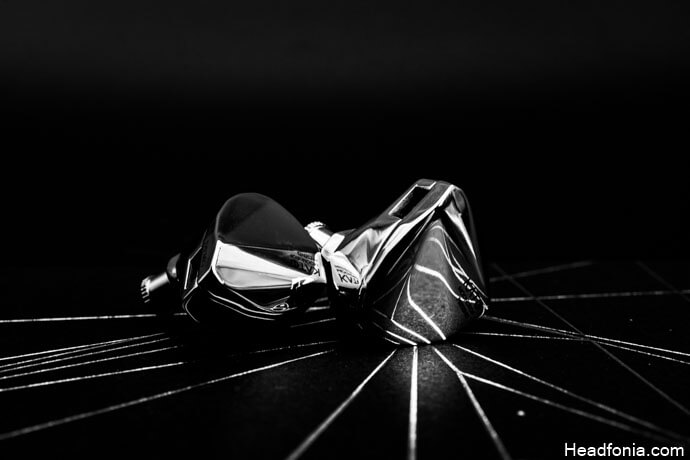
Technical Performance
The Kato has a very spacious and breathy presentation with a slightly warm, balanced signature. It also has a solid technical foundation. PRaT-wise, I didn’t expect this kind of agility and speed from a single dynamic driver, however, after critically listening to it for a week, I came to realize that my prejudice was unjust to the monitor.
It offers excellent stereo imaging, it has a wide and deep soundstage with precise instrument separation. There is plenty of air between the instruments and it is quite easy to follow individual instruments on stage. The layering and the positioning of the instruments are clear and distinct. Additionally, the Kato handles congestion well, thanks to its breathy presentation and coherent signature. The transients, on the other hand, are fast and agile, unlike many IEMs with a single dynamic driver. Overall, the Kato has an excellent technical foundation and offers very good performance for the price in this regard.
I reserved a paragraph for the comparison between the brass nozzle set and the stainless steel nozzle set however, the difference between them is mostly placebo for me. I can’t hear any difference and I think you’ll have better chances with the tip-rolling. In my opinion, the Kato does not need anything extra, unless you have seal issues with the included tips. Long story short, the nozzle sets do not change the sound signature but it’s nice to have them for easy servicing/cleaning.
Comparisons
vs. Mangird Xenns Tea ($299 USD)
The Tea features a 6BA+1DD hybrid configuration and is priced at $299 USD. It is a hybrid IEM with six more drivers compared to the Kato. However, tonality-wise, the Kato feels more organic and natural, especially mid-region. Instruments have more breathing room with the Kato and its presentation feels more spacious. The Tea has more energetic upper mids and a sharper treble. Pairing it with certain sources in my inventory is hard due to the brighter nature of the Tea. It does not feel as smooth or refined as the Kato.
Resolution-wise, the Kato is ahead of the much higher-priced Tea. Bass quantity is similar but Kato offers a better texture and it has a better sub-bass impact and detail. The note weight of the midrange feels light compared to the bolder and smoother Kato. They both have good treble with good detail but Tea is marginally more energetic than the Kato. Thus, making it hard to pair with reference, neutral or analytic sources.
vs. Etymotic EVO ($499 USD)
Etymotic’s EVO is a monitor that costs more than double the price of the Kato. They both have their pros and cons. First of all, they both have similar resolution and they both have a very clean presentation. Signature-wise, the Kato feels warmer whereas EVO is linear and flat. The Kato has a more dynamic, more energetic signature compared to the Evo.
Kato’s stereo imaging feels slightly more precise compared to Evo and I think that’s quite impressive. Apart from that, the Kato feels more relaxed and smooth whereas the Evo is a source and mastering nit-picker. The bass reproduction of the Kato is rounder, punchier, and quantitatively larger. Technical-wise, you can’t go wrong with them, it all comes down to signature preferences.
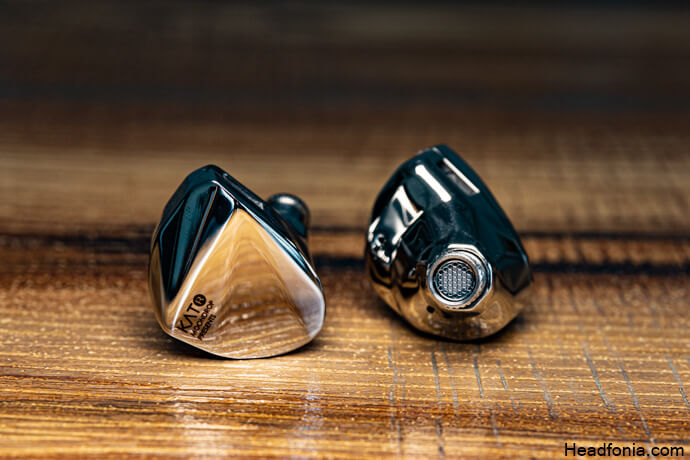
Last Words
Moondrop’s Kato is a carefully researched and designed product that offers an excellent unboxing experience with plenty of good-quality accessories. It boasts a robust build quality and great fit. It is clear that Moondrop took its time to develop this IEM and I am happy to say that they nailed it. Apart from the excellent fit, build and design, the Kato’s strongest selling point is its ability to precisely cast an accurate stereo image in your head. I did not expect this kind of layering, staging, and technical prowess from a sub 200 earphone, and I am surprised. Therefore, it is really easy for me to recommend you the Kato.
Page 1: Intro, Moondrop, Kato, Packaging & Accessories, Design, Build & Fit
Page 2: Sound Quality, Low, Mid, High, Technical Performance, Comparisons, Last Words





